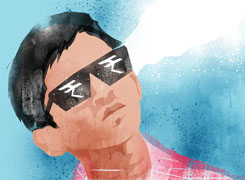Omkeshwar Singh | Answer |Ask -Follow
Head, Rank MF - Answered on Feb 15, 2022

I am 52 years old and I am investing in below MFs. Please suggest if need to changes
1) SBI Focus fund - 10,000
2) SBI Technology fund - 10,000
3) SBI Banking and finance fund - 10,000
4) SBI Flexi cap - 10,000
5) SBI health care - 10,000
6) AXIS Blue chip fund direct - 10,000
7) AXIS Flexi cap - 10,000
8) AXIS Small Cap - 10,000
9) AXIS Mid Cap - 10,000
10) AXIS Global Fund of Fund - 10,000
11) AXIS ESG Equity - 10,000
12) AXIS Special Situation Fund - 10,000
13) HDFC Small cap - 10,000
14) ICICI Banking and Finance - 10,000
15) Nippon Banking and Finance - 5,000
16) Nippon Health Care - 15,000
17) L&T Emerging Business Fund - 10,000
Below SIP I want to stop
1) AXIS Long tern Equity Fund ELSS - 13,000
2) Birla Sun Life Tax saving 96fund ELSS - 10,000
You may like to see similar questions and answers below
Omkeshwar Singh | Answer |Ask -Follow
Head, Rank MF - Answered on Mar 19, 2021
Ramalingam Kalirajan |8258 Answers |Ask -Follow
Mutual Funds, Financial Planning Expert - Answered on May 29, 2024
Hardik Parikh |106 Answers |Ask -Follow
Tax, Mutual Fund Expert - Answered on Apr 07, 2023
Ramalingam Kalirajan |8258 Answers |Ask -Follow
Mutual Funds, Financial Planning Expert - Answered on Jan 09, 2025
Kanchan Rai |580 Answers |Ask -Follow
Relationships Expert, Mind Coach - Answered on Apr 17, 2025
Kanchan Rai |580 Answers |Ask -Follow
Relationships Expert, Mind Coach - Answered on Apr 17, 2025
Kanchan Rai |580 Answers |Ask -Follow
Relationships Expert, Mind Coach - Answered on Apr 17, 2025
Ramalingam Kalirajan |8258 Answers |Ask -Follow
Mutual Funds, Financial Planning Expert - Answered on Apr 17, 2025
Ramalingam Kalirajan |8258 Answers |Ask -Follow
Mutual Funds, Financial Planning Expert - Answered on Apr 17, 2025
Ramalingam Kalirajan |8258 Answers |Ask -Follow
Mutual Funds, Financial Planning Expert - Answered on Apr 17, 2025

Let us now assess this with a 360-degree view. This is important for long-term clarity. Let us structure your Rs. 15 Cr for wealth safety, regular income, tax-efficiency and family needs.
Let’s look at each important area.
Understanding Your Current Asset Allocation
You have Rs. 2 Cr in PPF. This is long-term, safe and tax-free.
You have Rs. 4 Cr in deposits. These offer safety but may lag inflation.
You have Rs. 1 Cr in mutual funds. This shows some market participation.
You have Rs. 15 Cr in liquid form from recent sale.
You have Rs. 5 Cr in property. These are non-liquid, and for wealth holding.
Your overall wealth is Rs. 27 Cr. That is impressive. But over-dependence on fixed income can hurt wealth growth. Your PPF and deposits together form Rs. 6 Cr. These do not beat long-term inflation. That is a risk to family security.
Create Clear Financial Buckets for Purpose
Divide your Rs. 15 Cr into three buckets. Each has a different goal.
Bucket 1: For Emergency, Stability and Safety.
Bucket 2: For Medium-Term Needs in 5 to 10 years.
Bucket 3: For Long-Term Wealth Creation.
Let us now explore these buckets.
Bucket 1: Safety and Liquidity (Rs. 1.5 Cr)
This is to protect against sudden health or family emergencies.
Keep Rs. 75 lakhs in liquid funds or ultra-short-term funds.
These provide better returns than savings account. Still safe.
Rs. 75 lakhs can go to laddered fixed deposits.
Split this into 1-year, 2-year and 3-year ladders. Renew based on rates.
This bucket is not for growth. Only for comfort and liquidity.
Bucket 2: Medium-Term Stability (Rs. 3.5 Cr)
This money is not needed now. But may be required in 5 to 10 years.
Here, consider hybrid mutual funds.
Choose a mix of aggressive hybrid and balanced advantage funds.
These offer steady returns with lower volatility.
They shift between equity and debt. This reduces downside.
Choose actively managed funds. Avoid index funds.
Index funds copy the market. In falling markets, they give no protection.
A skilled fund manager in active funds can protect downside better.
Also, invest these in regular plans via a Certified Financial Planner.
Regular plans offer expert reviews and advice.
Direct funds lack this. Mistakes can cost more than small commission.
A CFP can rebalance when needed. Direct plan holders often ignore this.
This medium-term bucket protects you from inflation with lower risk.
Bucket 3: Long-Term Growth and Wealth Building (Rs. 10 Cr)
This is your most powerful wealth creation engine.
Equity mutual funds are the ideal choice.
Choose from flexi-cap, large and mid-cap and small-cap funds.
Diversify across 6-8 funds. Avoid fund duplication.
Avoid index funds here too. They follow the market blindly.
Active funds can outperform with right strategy.
Fund managers in active funds research deeply before investing.
Index funds don’t do that. In volatile markets, they may lag behind.
Active funds also book profits smartly. Index funds don’t do this.
Invest through a Certified Financial Planner in regular plans.
A CFP monitors performance and does course correction.
Direct funds don’t give that support. You may miss key changes.
CFPs also help with capital gain planning and tax harvesting.
Do not invest this money at once.
Use Systematic Transfer Plan (STP).
Start by parking Rs. 10 Cr in liquid funds.
Gradually shift to equity over 18-24 months.
This reduces entry risk due to market timing.
This is your family’s future security. Plan this layer with care.
Tax Planning and Capital Gains Efficiency
Your existing PPF is already tax-free. Keep it intact.
The Rs. 4 Cr in fixed deposits may be fully taxable.
Spread maturities to reduce tax burdens in one year.
Invest new money via mutual funds to lower taxation.
Equity mutual funds have better post-tax returns than FDs.
After the new rule, LTCG over Rs. 1.25 lakh is taxed at 12.5%.
This is still better than FD interest taxed as per slab.
Also, mutual funds offer more control over tax timings.
Stay invested for over one year to qualify for LTCG in equity mutual funds.
Debt mutual funds are now taxed as per slab for all durations.
So, use equity or hybrid equity-oriented funds more for tax efficiency.
Plan for Family Income Needs in Retirement
Even though you have 20 years, some income may be needed.
Create a passive income plan from mutual funds.
Use SWP (Systematic Withdrawal Plan) from balanced or hybrid funds.
They allow tax-efficient regular cash flow.
Better than FD interest. FDs offer less flexibility.
Reinvest what you don’t spend. Let compounding work for longer.
Avoid annuities. They lock funds and give low returns.
Mutual funds give liquidity and better growth.
Protect Your Wealth with Risk Management
Recheck your term insurance cover. Ensure it’s enough for your family.
Medical insurance should also be reviewed. Family floater with Rs. 25 lakhs is ideal.
Do not mix insurance and investment.
If you hold LIC, ULIPs or other bundled policies, evaluate now.
Surrender them if they are underperforming.
Reinvest proceeds in mutual funds.
You need pure insurance and pure investment. Not a mix.
Estate Planning and Family Financial Clarity
Your wealth is large. Create a Will now. Don't delay this step.
Mention asset distribution clearly.
Assign nominees across all investments.
Tell your family where documents and investments are kept.
Add joint holders or Power of Attorney if needed.
Consider forming a family trust if your estate is complex.
Consult a lawyer for this. Your Certified Financial Planner can guide you too.
Estate clarity gives peace of mind to all.
Ongoing Portfolio Review and Adjustments
Markets change. Goals shift. Health changes. Family needs evolve.
Review your portfolio every year.
A Certified Financial Planner helps track progress.
They rebalance funds based on market and your risk.
They help adjust tax strategy as per rule changes.
They assist in aligning investments to changing family goals.
Avoid doing this alone. Mistakes compound over time.
Finally
You’ve built a strong financial foundation. That’s a rare achievement.
Now, shift focus from only capital safety to capital growth.
Your Rs. 15 Cr can become a family legacy. Let it grow wisely.
Avoid chasing returns. Instead, follow a disciplined process.
Work with a Certified Financial Planner. They bring vision and discipline.
Keep your investments simple. Keep your goals clear.
Review regularly. Protect your wealth from inflation and taxes.
And keep your family informed at every step.
This is how you create wealth. And protect it for 20 years and beyond.
Best Regards,
K. Ramalingam, MBA, CFP,
Chief Financial Planner,
www.holisticinvestment.in
https://www.youtube.com/@HolisticInvestment
Best Regards,
K. Ramalingam, MBA, CFP,
Chief Financial Planner,
www.holisticinvestment.in
https://www.youtube.com/@HolisticInvestment
Dr Dipankar Dutta |1139 Answers |Ask -Follow
Tech Careers and Skill Development Expert - Answered on Apr 16, 2025
Patrick Dsouza |1024 Answers |Ask -Follow
CAT, XAT, CMAT, CET Expert - Answered on Apr 16, 2025
Patrick Dsouza |1024 Answers |Ask -Follow
CAT, XAT, CMAT, CET Expert - Answered on Apr 16, 2025
Ramalingam Kalirajan |8258 Answers |Ask -Follow
Mutual Funds, Financial Planning Expert - Answered on Apr 16, 2025

























